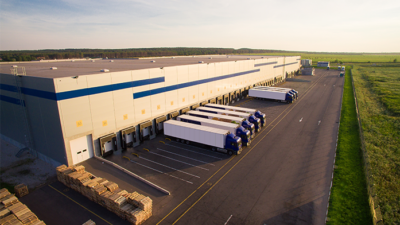As we close out 2023 and look ahead to next year, Colliers’ national research team has compiled 10 trends and predictions spanning the economy and asset classes. Quick Hits will return in 2024.
Labor Market to Soften: After bottoming at 3.4% in April 2023, the unemployment rate climbed 50 basis points through October, before falling slightly in November. While another 75-basis-point rise in 2024 seems manageable, larger concerns are the labor force participation rate, which has yet to reach pre-pandemic levels, and the mounting impact of retiring Baby Boomers on a softening labor market.
Higher Cost of Capital: The Fed’s aggressive rate hikes over the last 18+ months have dramatically altered the cost of capital. Higher interest rates impact acquisitions and refinancing and influence the ability to increase inventories, buy additional equipment, and finance tenant improvement allowances. While the markets began to price in interest rate cuts in June, it will take considerably longer to get capital flowing freely.
Insurability: The National Oceanic and Atmospheric Administration (NOAA) reported 23 U.S. weather disasters with damage totaling at least $1 billion year-to-date in 2023, the highest number of weather catastrophes in over 40 years. It also marks the ninth consecutive year with more than ten $1 billion disasters. Landlords will continue to face rising insurance premiums as providers limit their exposure in high-risk coastal and mountain areas in states like California, Florida, Louisiana, and Texas.
Sales Volume: After volume soared to record highs in 2021 and 2022, the market experienced a decline in 2023. The typical second-half-of-the-year pop didn’t materialize, pushing expectations for a more sustained recovery out to 2024. Debt maturities will force the issue in the new year, driving increased velocity, if not aggregate sales volume. Owners that do not have to sell will largely sit out 2024. Office volume has likely bottomed out.
Distress: CMBS delinquencies are on the rise, with many properties unable to refinance at maturity, raising the risk of more distressed properties on the market. While this should not be anything akin to the Savings & Loan Crisis days, aggregate distress matching or exceeding the GFC era is likely in 2024 and 2025.
Manufacturing Reshoring: While speculative development of warehouse and distribution facilities is quickly dropping, manufacturing construction spending has never been higher. Manufacturing reshoring has accelerated impressively during the past two years with the CHIPS Act, primarily catalyzed by rising tensions with China and supply chain concerns. While most development has been concentrated in semiconductor and electric vehicle battery facilities, it is also increasing for food and beverage processing, chemicals, and plastics factories.
Industrial Construction: While developers are still completing more industrial facilities than ever, construction starts have fallen dramatically, and the construction pipeline has started to contract. With the cost of capital high, demand slowing, and vacancy rising, developers will focus on build-to-suit projects and specialty facilities, including cold storage, manufacturing, and data center development. This respite in speculative development will allow time for industrial occupiers to absorb much of the modern space being completed.
Office-to-Multifamily Conversions: Municipalities will begin to offer more incentives to convert office to residential through increased density, tax abatements, or direct subsidies. However, the financial and structural challenges of converting office to residential use will remain challenging. Conversions will help on the margin but will not have a meaningful impact on national office or multifamily inventory.
Office Rents: Despite a 600-basis-point increase in office vacancy over the last four years, asking rents remained resilient and continued to rise through 2023, although concessions soared. Rent compression will be more pronounced in 2024, with the most significant declines in older and inferior assets.
Improving Efficiencies: Retailers plan to invest heavily in automation within their stores and warehouses over the next few years to boost operational efficiency, reduce costs, and boost profits. In addition, artificial intelligence deployment is expected to increase ninefold in the next two years.
You can find more information on these trends and other predictions in our 2024 Outlook.

 Aaron Jodka
Aaron Jodka


